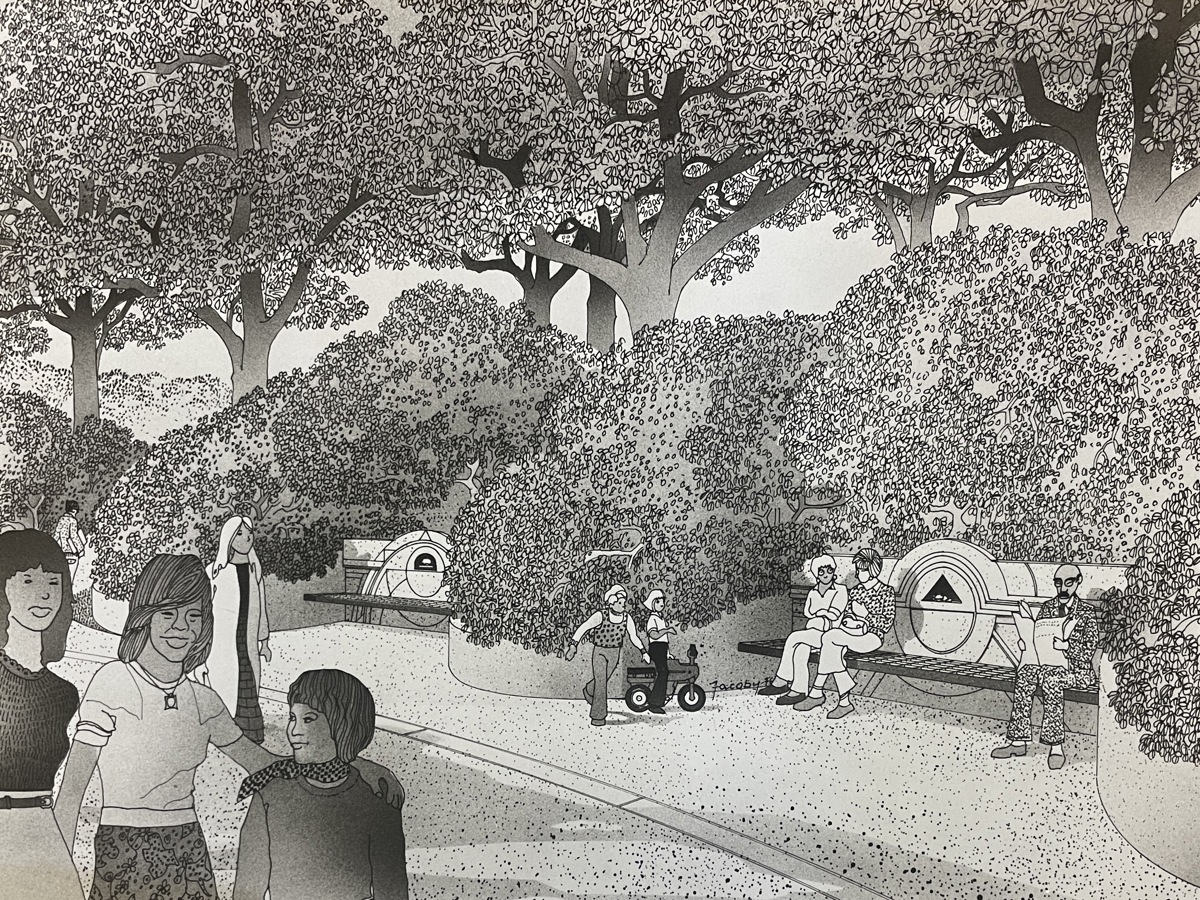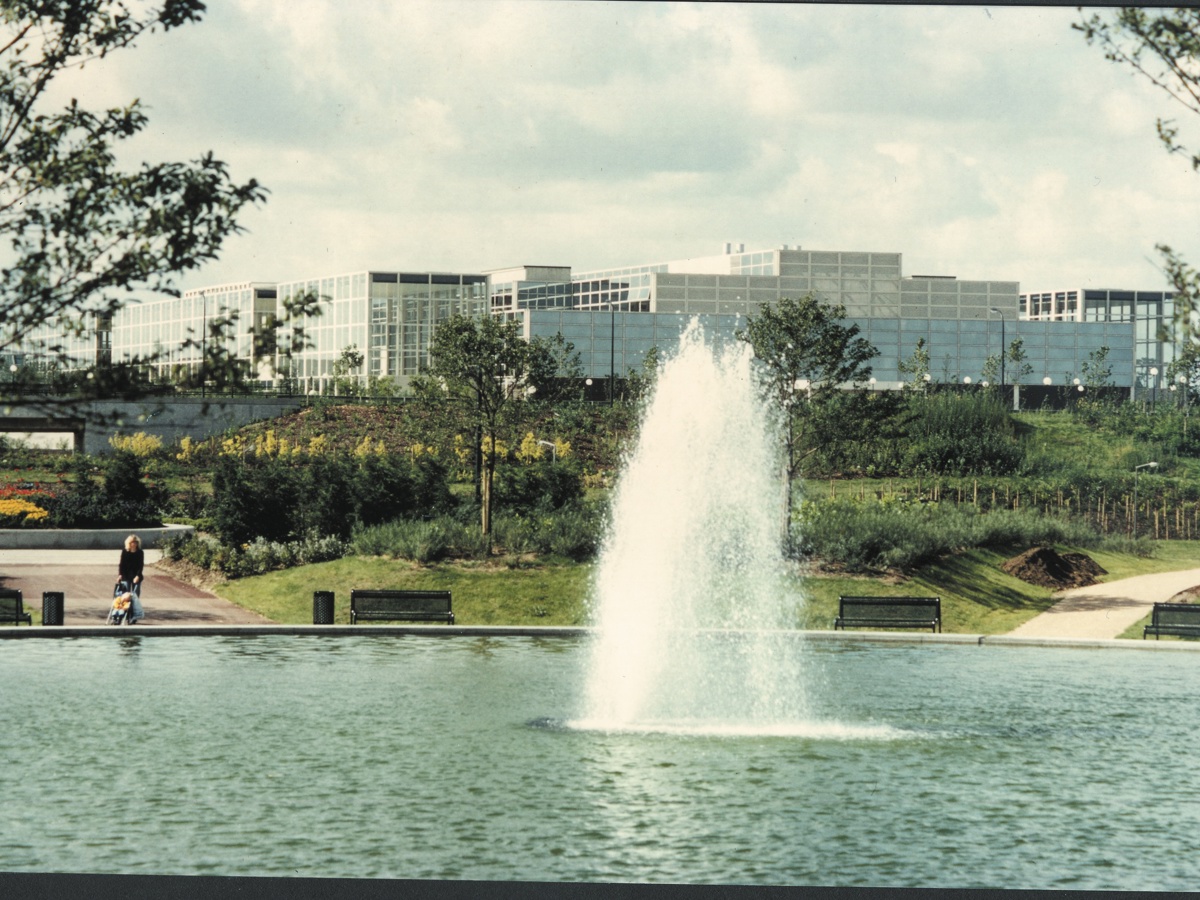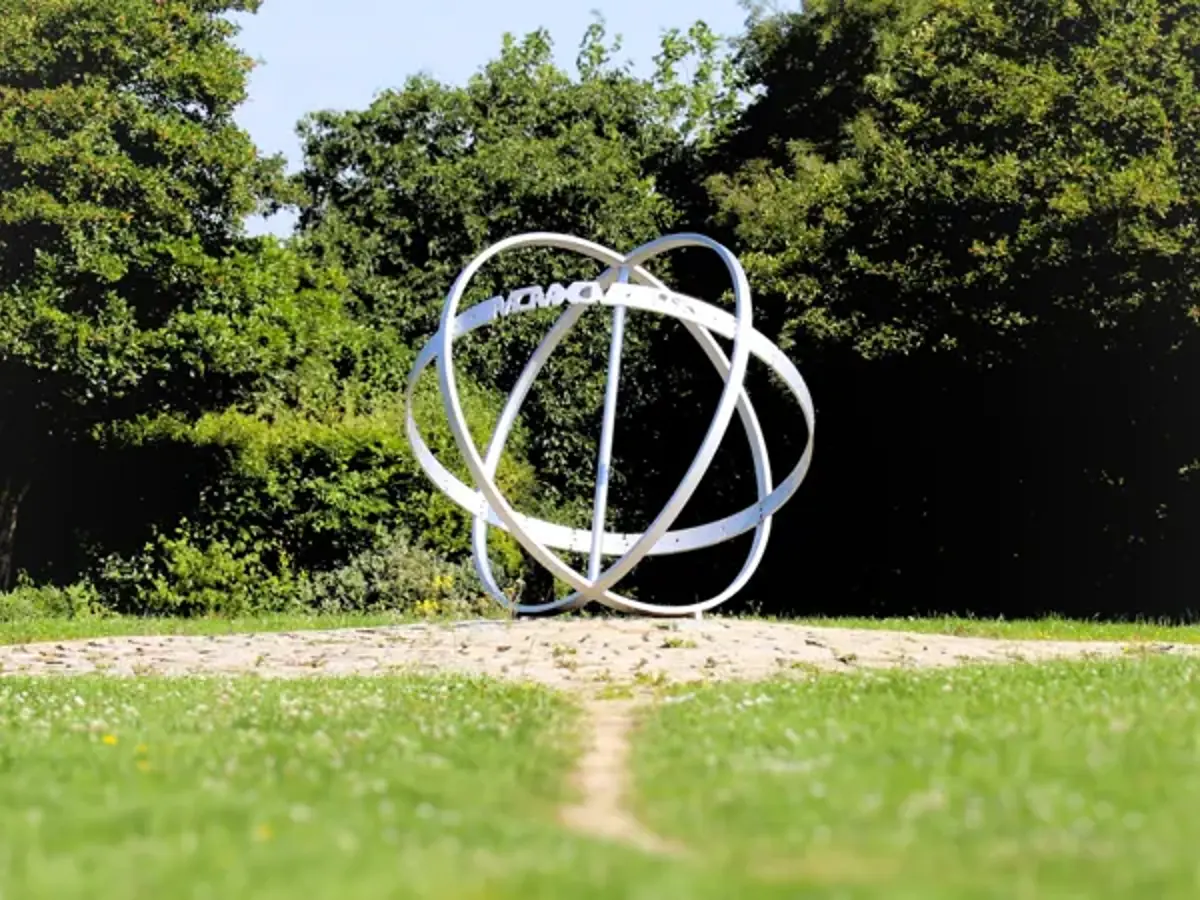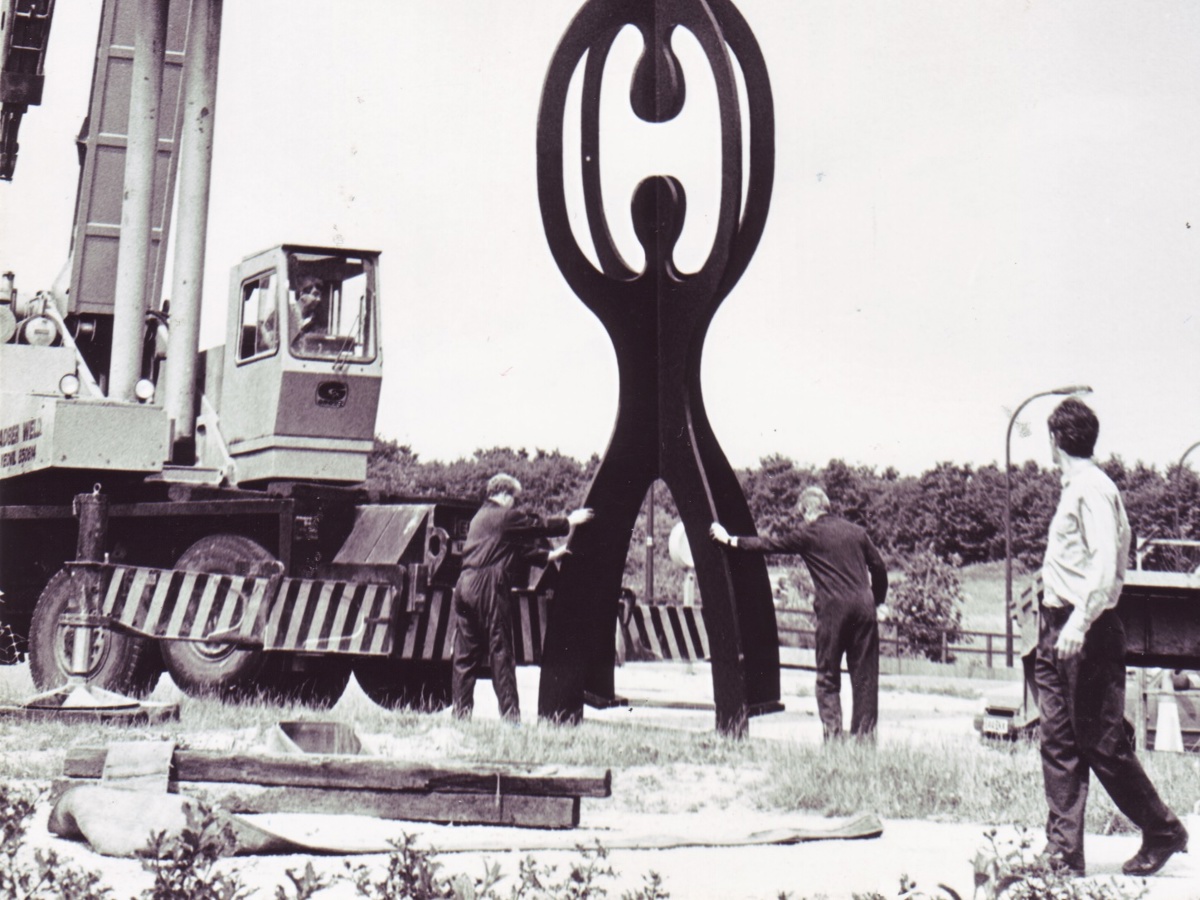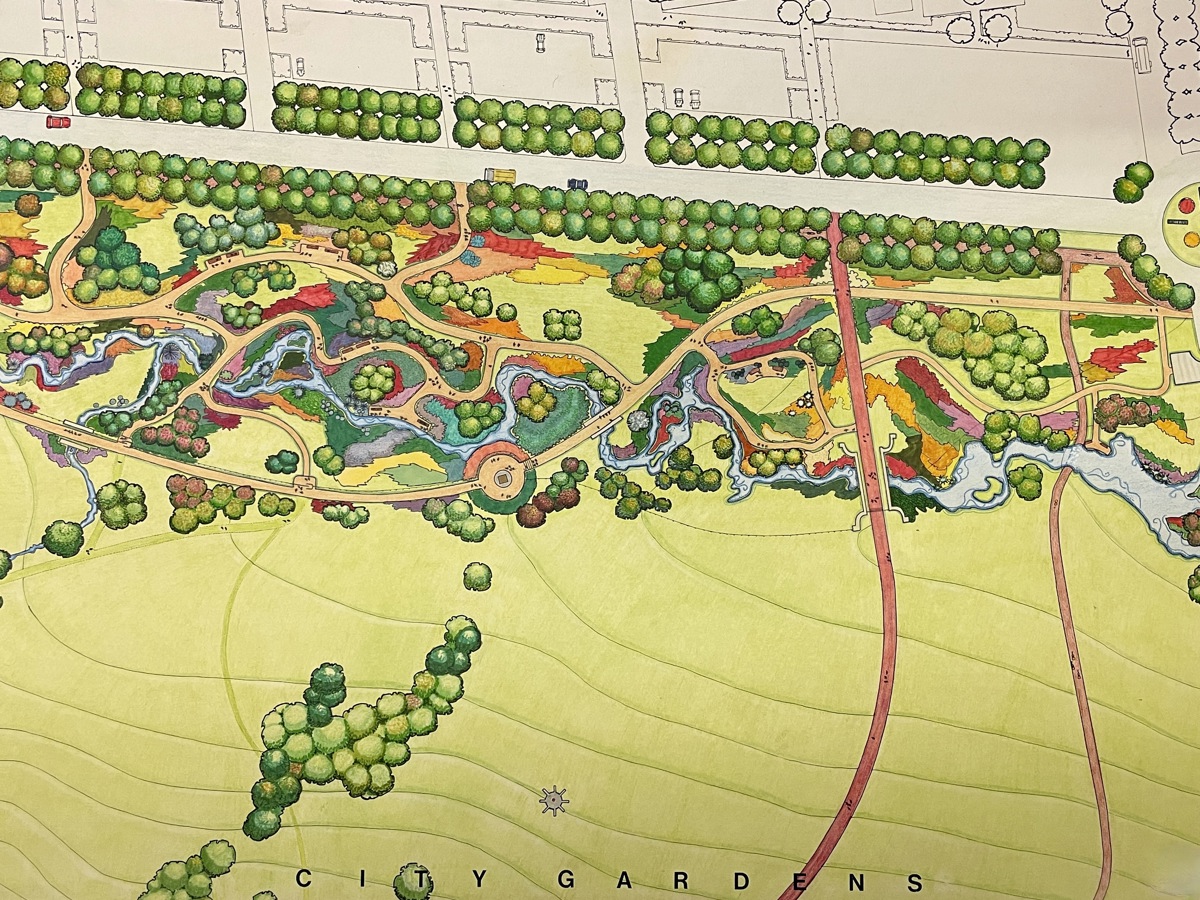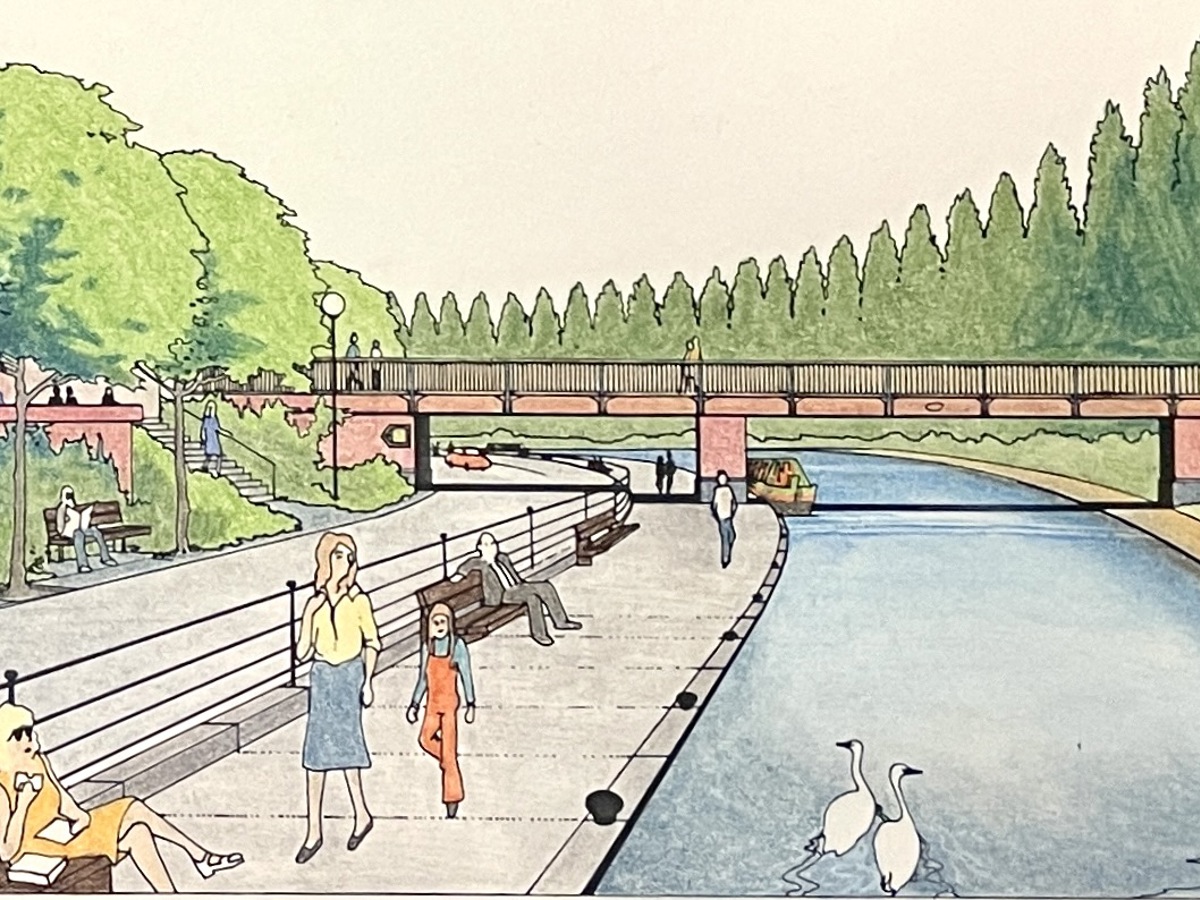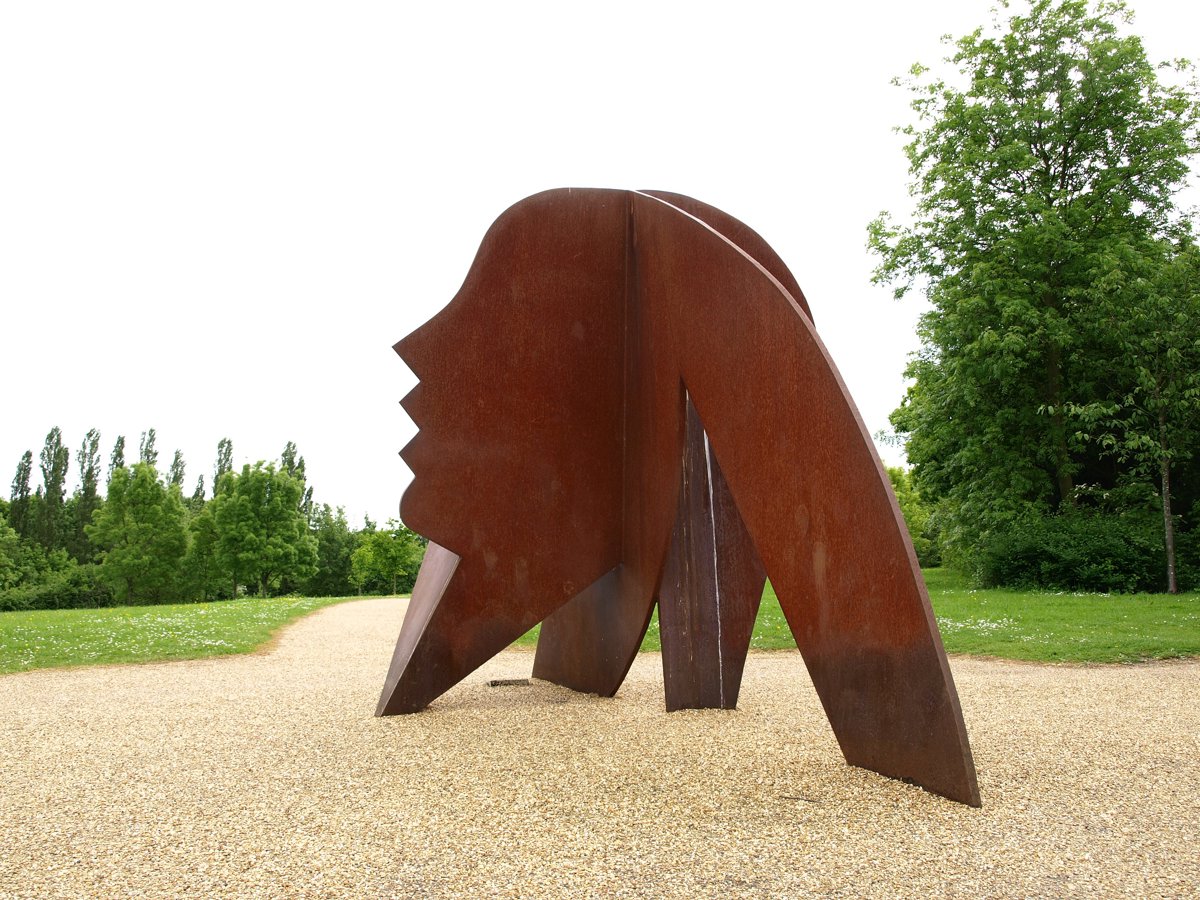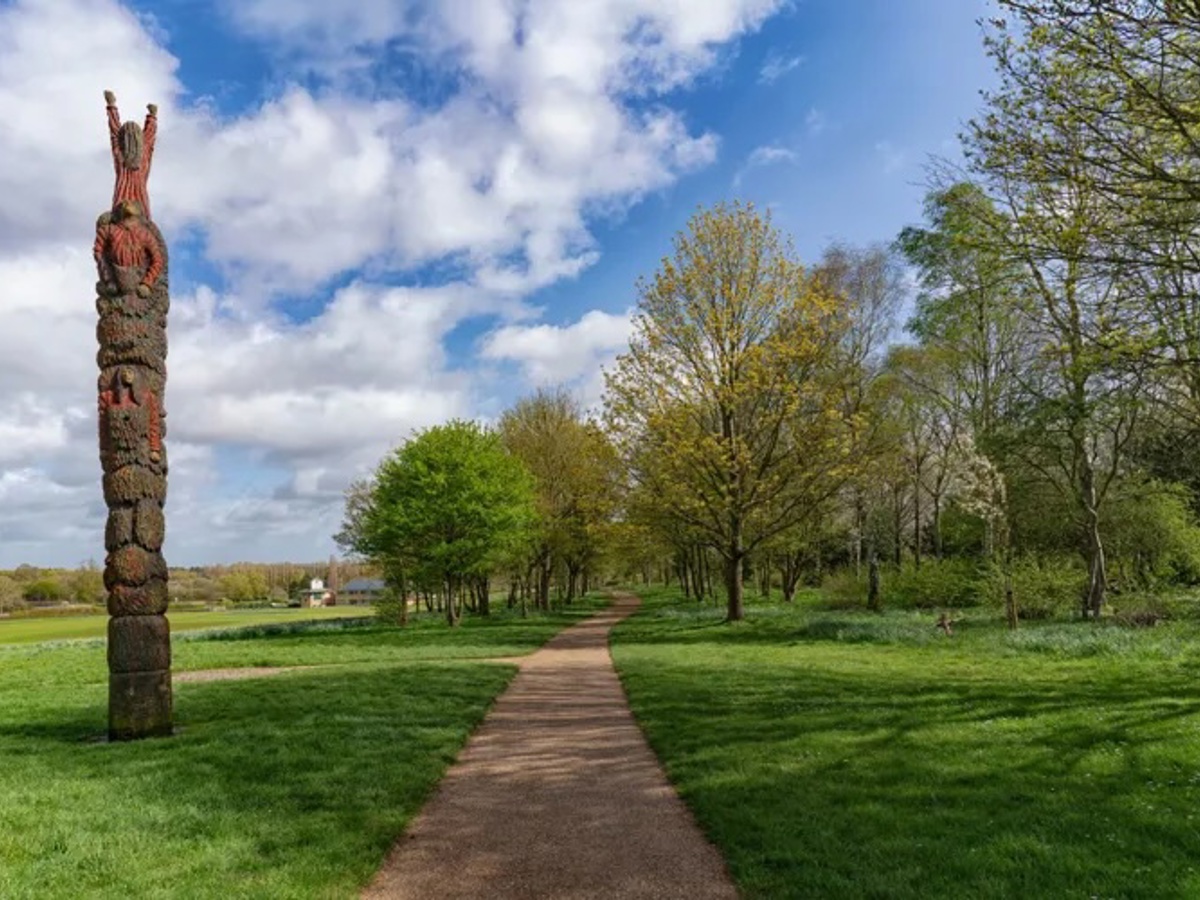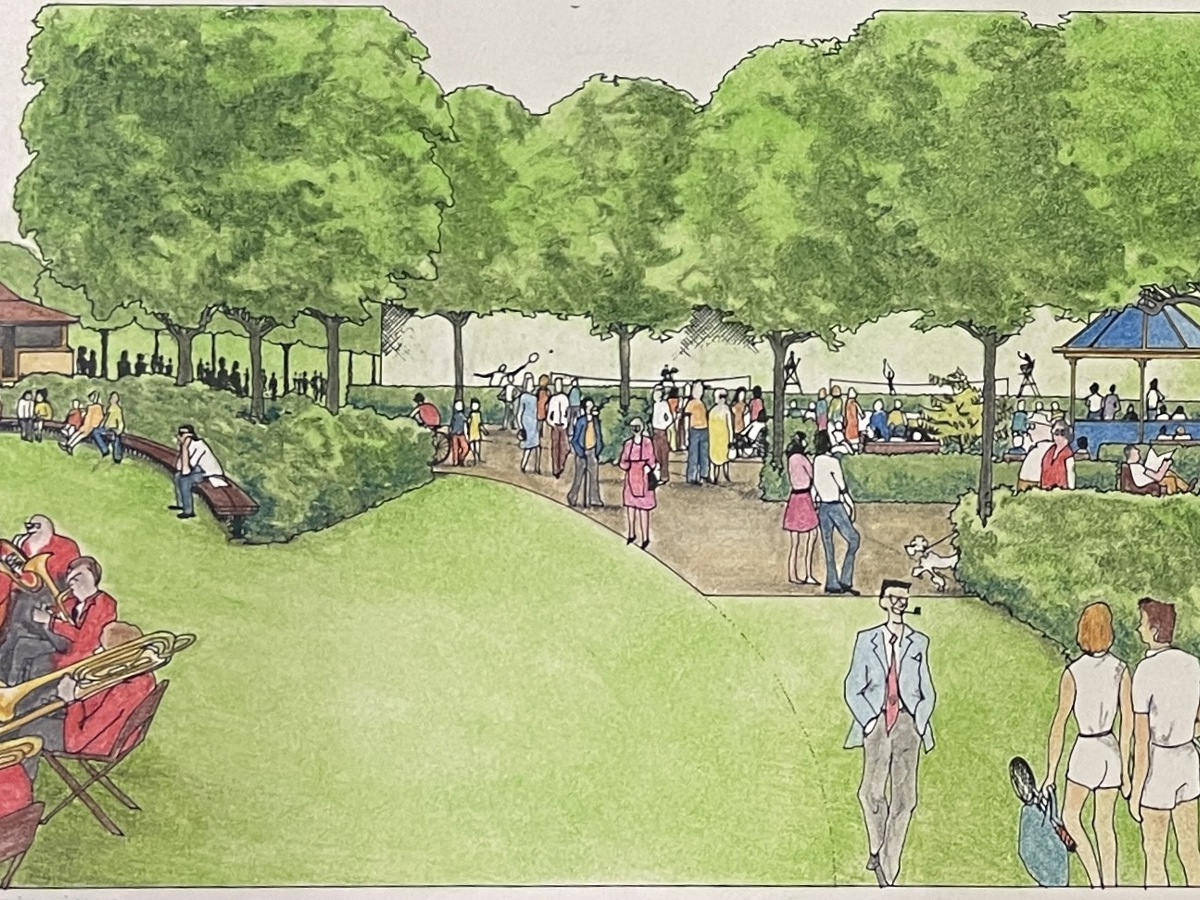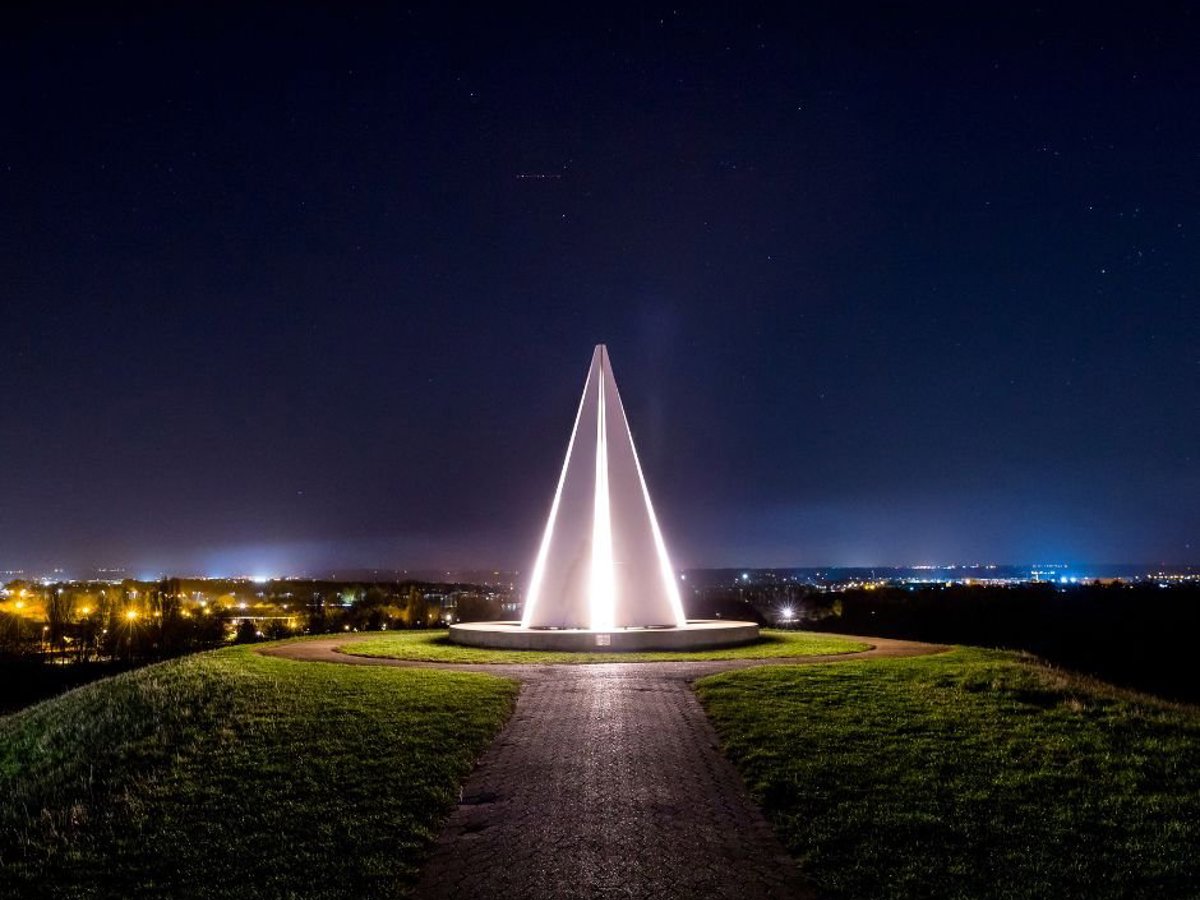Mysticism in the Park
The medieval maze at Saffron Walden was, according to Neil Higson, chief landscape architect at Milton Keynes Development Corporation, an “inspiring thing from beyond”. It’s no surprise then to find a labyrinth set into the grassland of Campbell Park. Mazes and labyrinths have been part of formal garden designs since at least the 16th Century, and part of a mystical tradition for much longer. The pathway leads the contemplative walker on metaphorical twists and turns, into possible false starts and certain dead ends, as they make their way to the centre.
At the centre of the Campbell Park labyrinth is Justin Tunley’s “Armillary Sphere”, another ancient tradition that combines science and spirituality as it represents the great circles of the heavens (now recognised as the planetary system), and our place within them. Tunley’s sphere is also a sundial, with the central gnomon casting a shadow across an outer circle marked with the Roman and Arabic numerals marking the year the sculpture was installed, on Midsummer’s Day 1995.
Listen to Justin Tunley talking about sundials, spheres and his sculpture.
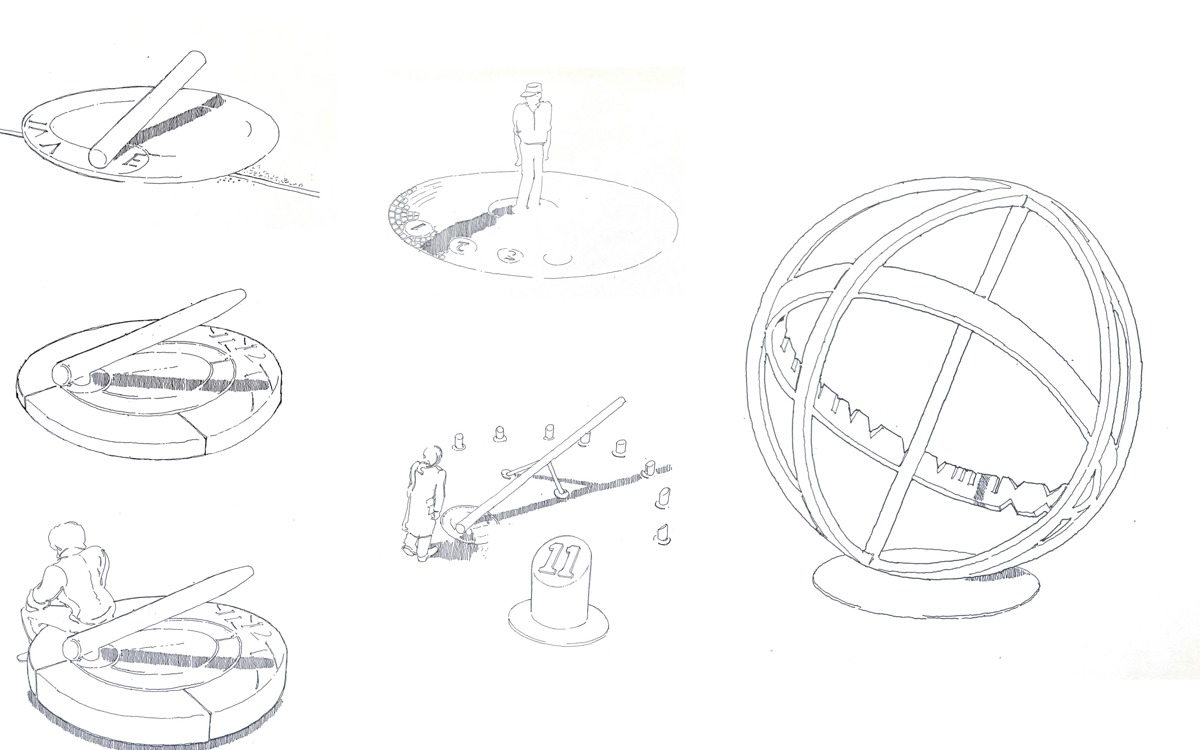
Midsummer Boulevard runs through the city centre towards Campbell Park and the orientation of this road, and the grid which extends around it, forms part of the mythology of a mystical Milton Keynes. The MKDC architects were said to be entranced by the idea of the midsummer sun rising above the horizon at the end of the Boulevard, and the Belvedere in the park offers a prime spot for viewing it. Every year hundreds of residents and visitors are here to witness the rising of the Midsummer sun, which is believed to be perfectly aligned with the Milton Keynes grid.
Image 1: Artist’s sketches of different designs of sundials for the Campbell Park Labyrinth, also showing different levels of interaction with the viewer (Justin Tunley)
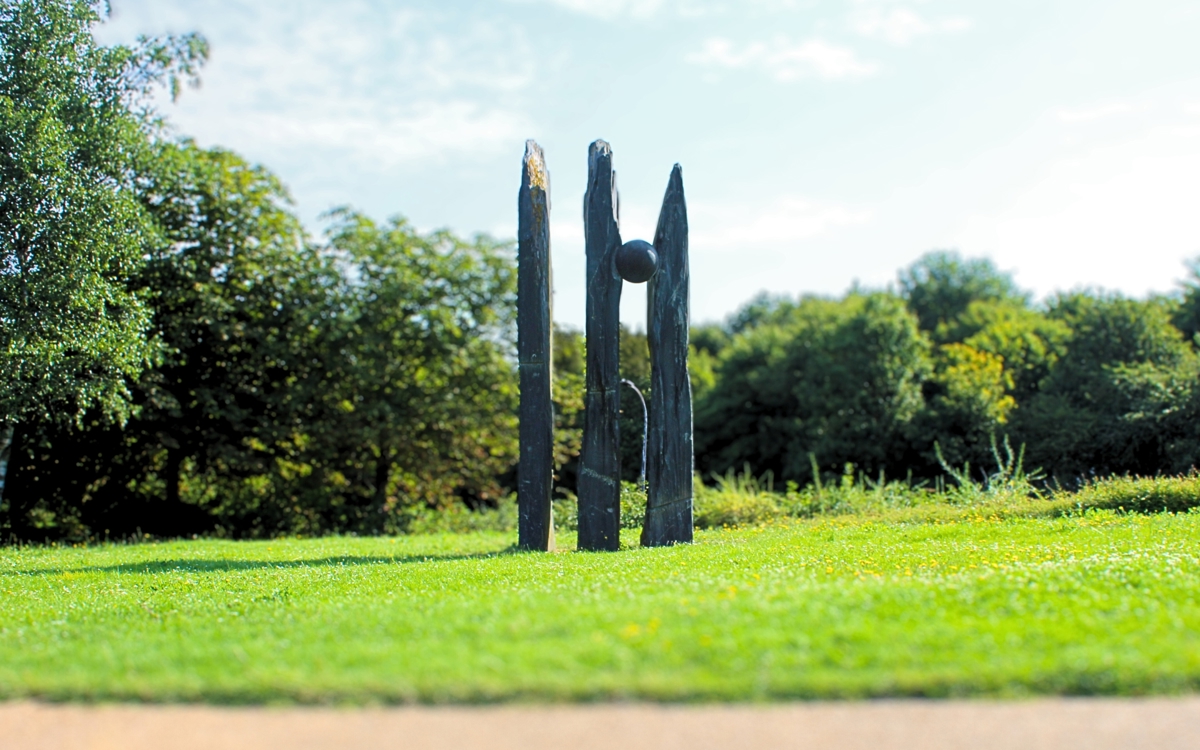
Some people have made wider connections, noting that Midsummer Boulevard is also aligned with Glastonbury Tor and therefore forming a ley line of national importance. Others however are more pragmatic and point out that the sun rises above the horizon in line with Midsummer Boulevard on 20th July, a full month after midsummers day. A further reference to sundials, leylines, ancient tracks and other mysticisms can be found in Gnomon, the sculpture beside the Cricket Pavilion at the other end of the park.
Image 2: Gnomon Sculpture
Stuart Mosscrop, Chief Architect for CMK tells a journalist "The initial alignment with the solstice was a coincidence. But when we found it, we rearranged the grid slightly to line up. There was, it’s true, a lot of interest at the time in ley lines and archaeology and all of that, so we played with it. We even put a stainless-steel disc in the centre with all the solar paths and lines laid out… It isn’t there anymore."
Milton Keynes: curio from the past or model for the future? Edwin Heathcote, ft.com, March 1 2019Follow the Campbell Park Trail to discover the history of this Grade II listed landscape. Featuring archive photos and videos with the people who helped make the park what it is today.

